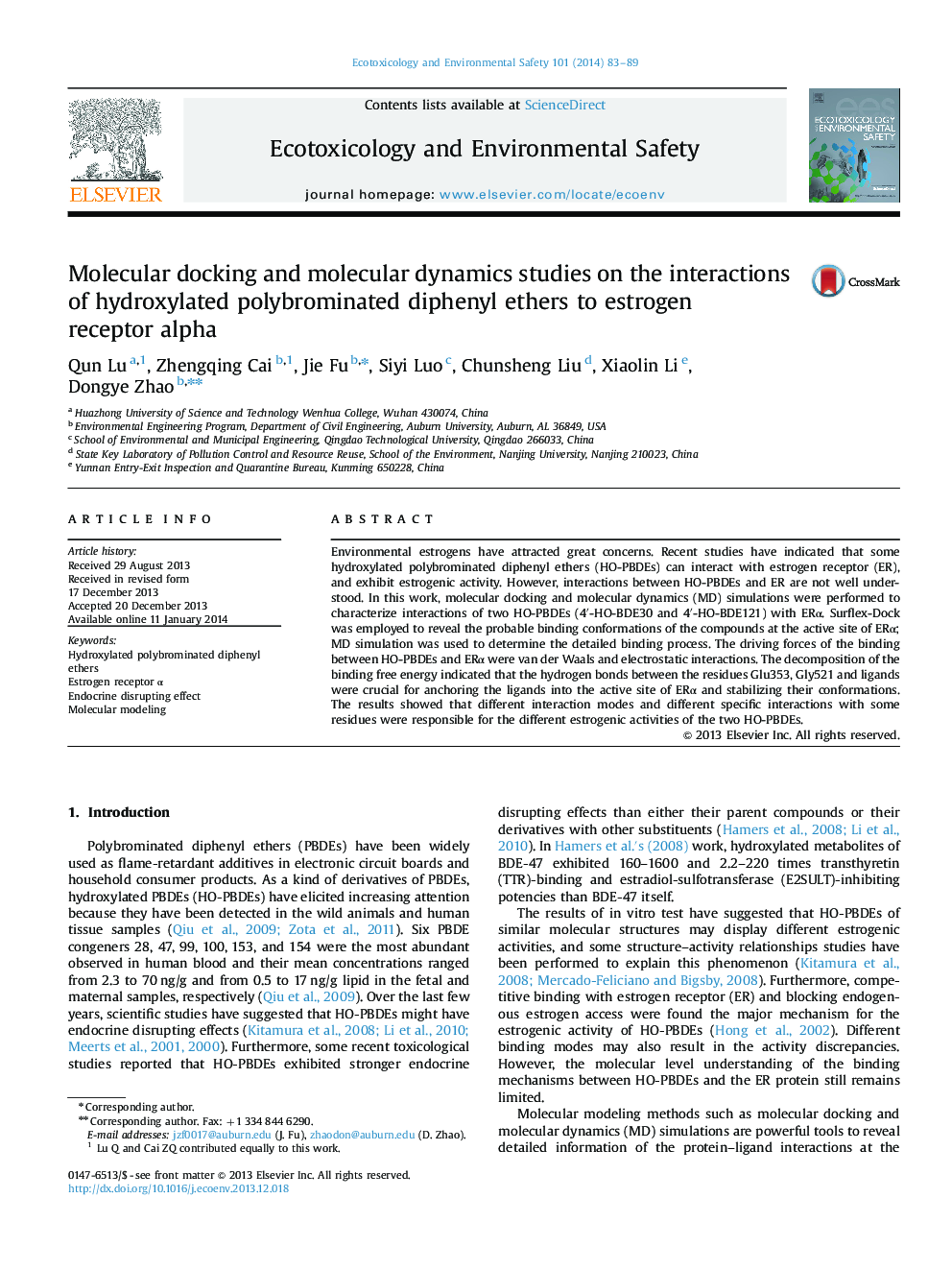| Article ID | Journal | Published Year | Pages | File Type |
|---|---|---|---|---|
| 4420215 | Ecotoxicology and Environmental Safety | 2014 | 7 Pages |
•The driving forces of the binding were van der Waals and electrostatic interactions.•Hydrogen bonds between the residues Glu353, Gly521 and HO-PBDEs were crucial for their binding to ERα.•The difference of 4'-HO-BDE30 and 4'-HO-BDE121 in estrogenic activity was primarily owing to the different hydrogen bonds and van der Waals interactions.
Environmental estrogens have attracted great concerns. Recent studies have indicated that some hydroxylated polybrominated diphenyl ethers (HO-PBDEs) can interact with estrogen receptor (ER), and exhibit estrogenic activity. However, interactions between HO-PBDEs and ER are not well understood. In this work, molecular docking and molecular dynamics (MD) simulations were performed to characterize interactions of two HO-PBDEs (4'-HO-BDE30 and 4'-HO-BDE121) with ERα. Surflex-Dock was employed to reveal the probable binding conformations of the compounds at the active site of ERα; MD simulation was used to determine the detailed binding process. The driving forces of the binding between HO-PBDEs and ERα were van der Waals and electrostatic interactions. The decomposition of the binding free energy indicated that the hydrogen bonds between the residues Glu353, Gly521 and ligands were crucial for anchoring the ligands into the active site of ERα and stabilizing their conformations. The results showed that different interaction modes and different specific interactions with some residues were responsible for the different estrogenic activities of the two HO-PBDEs.
